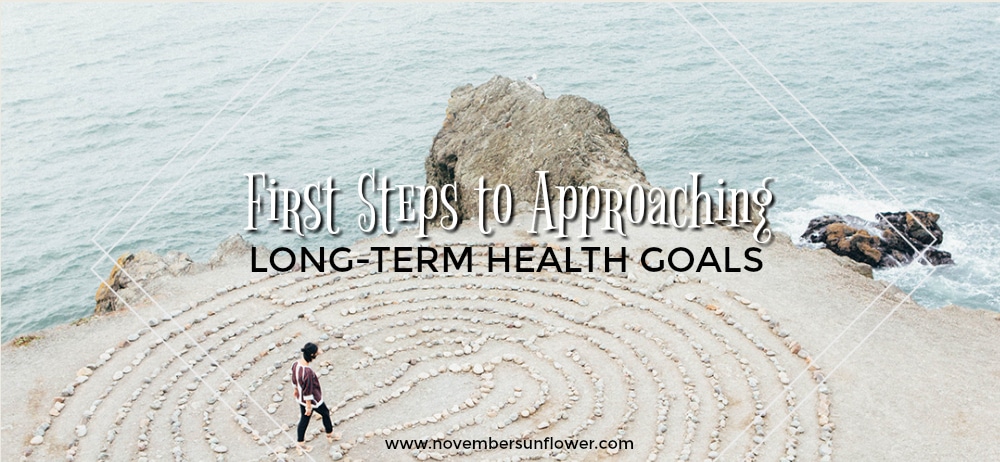Setting goals is something some people look forward to when a new year approaches. It’s an opportunity to hit the restart button and revive any hopes and dreams that have fallen by the wayside. There are various types of goals one can set that range from financial to personal development goals, and in order to achieve these goals, it helps if your health is in good shape. For this reason, consider including better health in your aspirations for the new year.
Ways to approach long-term health goals
So that you achieve your goals or at least come close, it may help to put a strategy in place. It’s one of many ways to break your goals down into practical steps, which can make them more achievable. On that note, find a few steps to approaching long-term health goals below.
Clearly Define Your Goals
Making the decision to better your health is a positive one to make. However, it can also be classified as an ambiguous goal as health is very broad. In light of this, get specific about what your health goals are by making them SMART. If you’ve never heard of this acronym before, it refers to making your goals specific, measurable, achievable, relevant, and time-bound. For instance, you could set a goal to lose 20 pounds in six months. Not only is this a time-bound goal, but it’s also easy to measure and monitor.
After defining SMART goals, it’s critical that you further break them down so that they can be worked on every day. Writing them down is a way to help you not only remember but also monitor your accomplishments.
Assess Your Current Condition
Now that you understand how to clearly define your goals, think about what exactly your goals are. Look honestly at the present condition of your health and decide what you need to do to achieve optimum health.
Do this by breaking your health down into different categories and determining which need the most improvement. Some categories of health you may consider are physical and mental health. Examples of physical health: the level your body functions at and whether or not your nutrition is balanced. On the other hand, mental health looks at your emotional, mental, and psychological well-being.
Instead of trying to fix a million things at once, spend your energy focusing on one or two at a time. To help you decide where to begin, you may want to get a physical examination and speak with a health professional about ways to improve your health — which includes seeking out therapy or other forms of counseling if your mental health is feeling particularly weak. You can also look out for evident areas of your health that need addressing.
If you squint often, you could need an eye examination to check for vision problems. In the same regard, perhaps you have less energy than you once did, which could suggest you need to change your diet or get more rest.
Use a Holistic Approach
Another step to take when approaching your long-term health goals is to use a holistic approach. If your goal is to lose weight in the new year, remember that it doesn’t have to be a sprint. Consider a gradual and well-balanced approach so that it’s more sustainable and you don’t place unnecessary pressure on yourself. This means avoiding fad diets and any other approach that may give you fast results but at a detriment to your health.
Some examples of fad diets are the Keto diet and the alkaline diet. Though they can have some pros, such as helping you learn more about nutrition and rapid weight loss, they have cons too. These include being at risk of dehydration and malnutrition. For the sake of balance, commit to eating well-balanced meals every day. A way to do this is by consuming high-quality products like fruits, vegetables, healthy carbs, proteins, and healthy fats.
Also, don’t be afraid of weaning yourself off of unhealthy eating habits gradually as opposed to abruptly trying to change them. If you enjoy carbs like white rice, you could start by replacing it with brown rice. This is a way of cleaning up your diet over time, and it may prove less daunting for you.
A holistic approach should also be taken when it comes to exercise. There are ways that you can achieve weight loss and improve your mind simultaneously. Some examples are through activities like yoga, tai chi (a form of martial arts), and massage.
Combine Your Goals and Routine
When you’re setting health goals, you’ve got to think about how they fit into your daily routine. If your goal is to increase the amount of time you spend working out by an hour every day, but you work late hours, it could be difficult to sustain. This is where combining your health goals and daily routine comes into play. This could look like jogging home from work to get that extra workout time in, as opposed to trying to find an hour after a long day of work.
You should also consider how changes in your routine could impact your health goals. If you’ll be traveling more in the new year and you’re vegan, for example, you may need to take your own meals along if possible. In the event that it isn’t, carrying along vegan supplements or making people aware of your dietary restrictions should help you stay on track.
Your health is something that you’re going to have to maintain all of your life. When your health is in a good place, it sets a good foundation for you to enjoy all other aspects of your life.
Author Bio: Brooke Faulkner is a writer and mom in the beautiful Pacific Northwest. You can check out more of her writing on twitter, @faulknercreek






